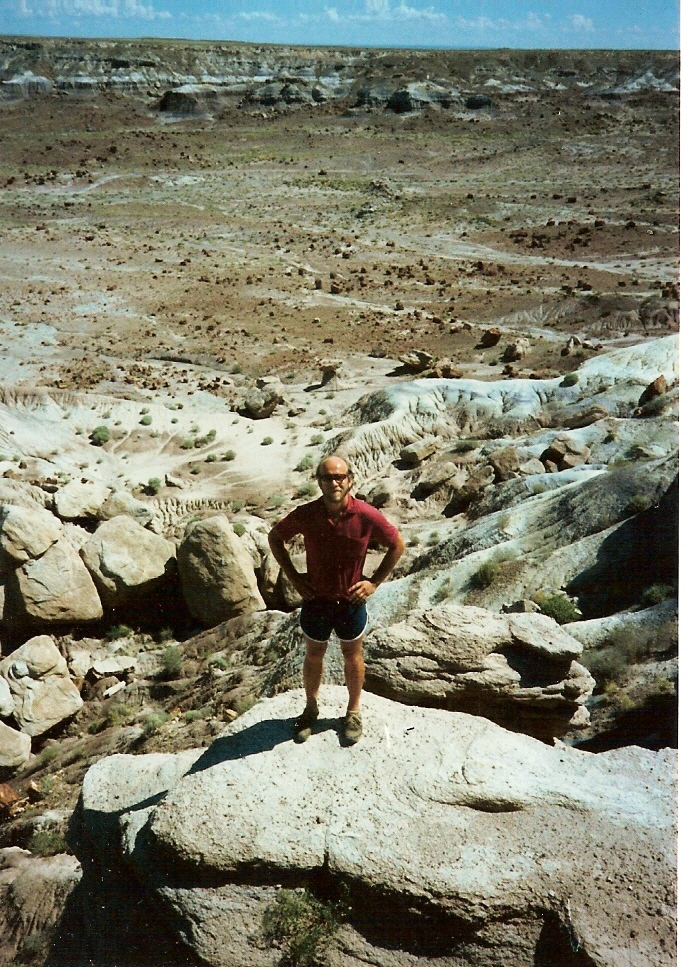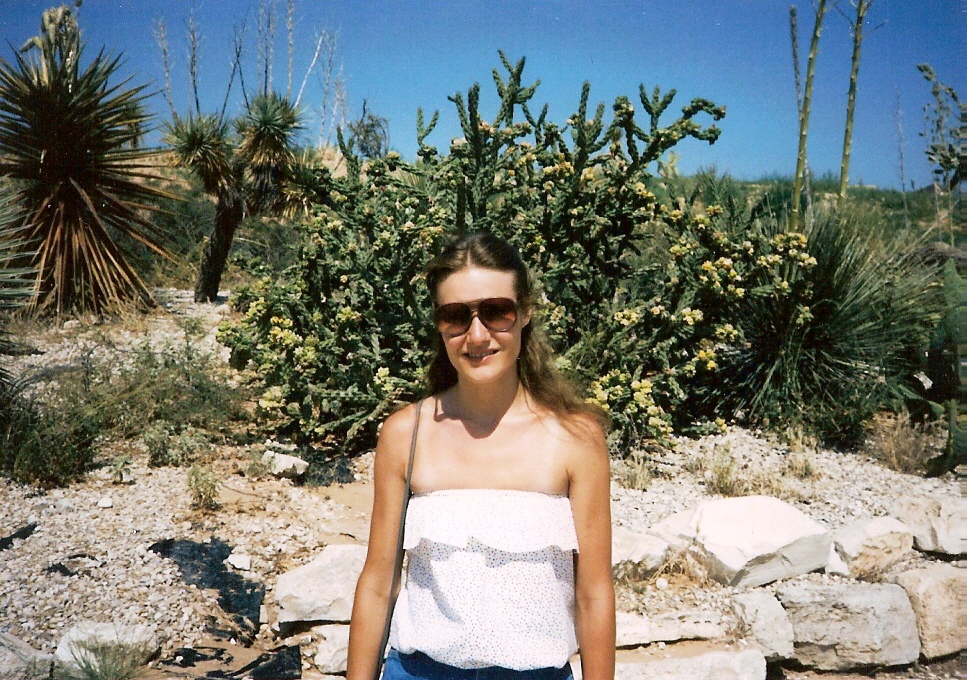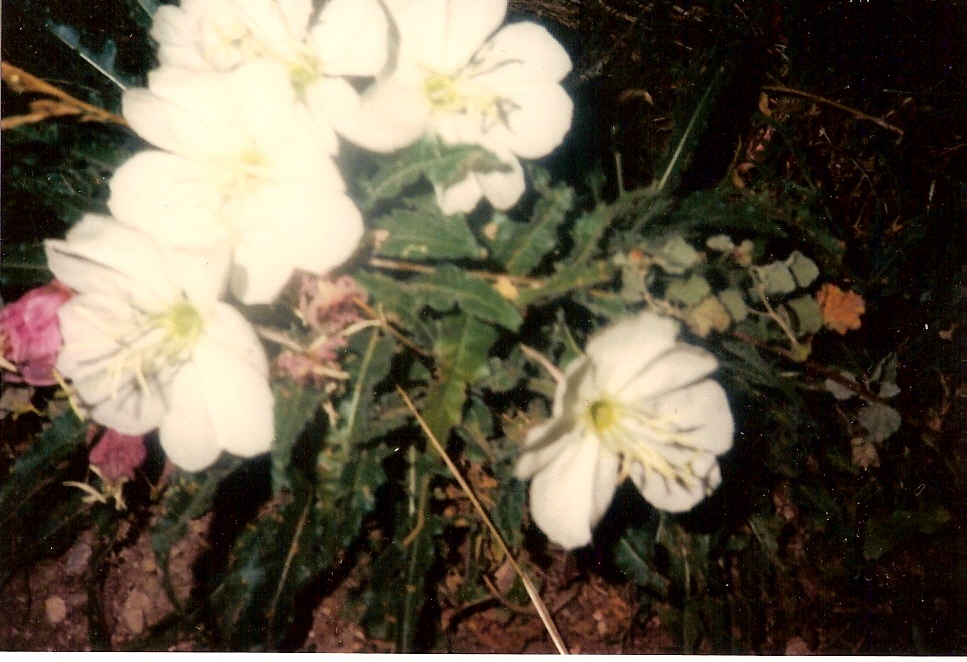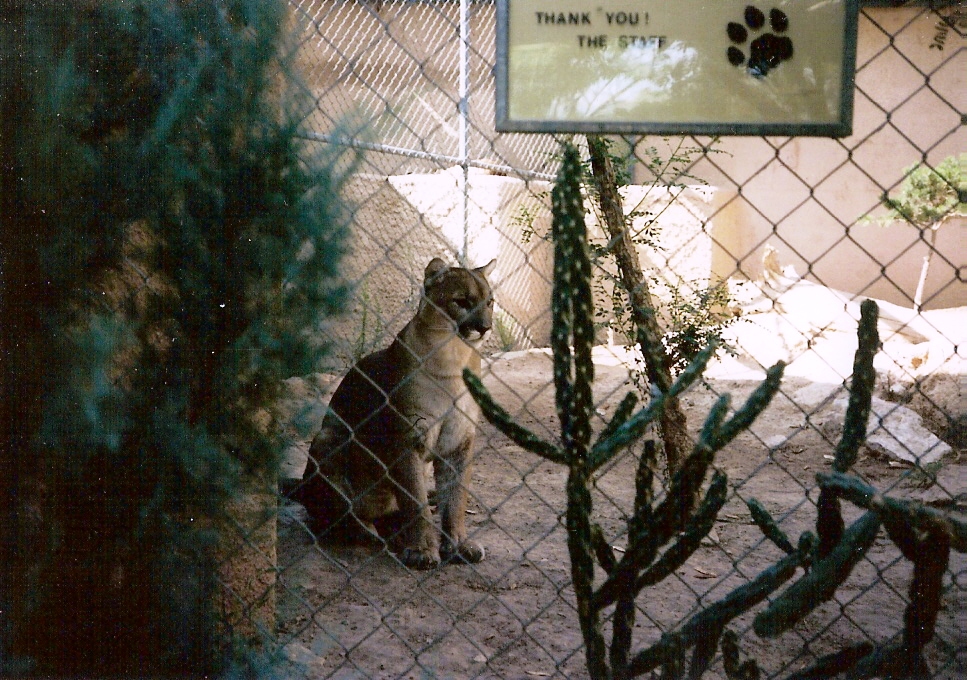"Got up at 6:00 a.m. I got up before Laurie did, had 2 cups of coffee before she opened her eyes."
We didn’t use an alarm clock except for those days when we were driving to the next destination and wanted to arrive by a certain time. On this particular day, Bill’s internal clock went off early!
We went back out to the National Park to start sightseeing at the exact point that we left off the day before when Laurie’s contacts had started to bother her. The first stop was to take the walking trail out to the Crystal Forest.
 |
| Crystal Forest |
The Crystal Forest is a place where a lot of the petrified wood has been vandalized. Many throughout the years had carted off a lot of this precious rock. In fact there were loads of logs within this area that the mark of having been chiseled and broken up for the vandals to cart off the quartz crystals was evident.
 |
| Broken Pieces of Petrified Wood |
Here lies an area that has the beginning effects of the badlands of the painted desert. The logs lie out in the vast expanse among the silt-like formations. The logs are those little dots you see in the background.
 |
| Badlands with Petrified Wood Logs |
The next location that we rode the motorcycle to was the Jasper Forest. Jasper Forest has a wonderful overlook that lets the visitor view the vast land of the badlands within the painted desert as a complete overview.
 |
| Jasper Forest Overlook |
While we were in the area of Jasper Forest, Bill spied a few of the park’s herd of pronghorn antelope lying in a wash bed. He crept up very quietly to capture it on film.
 |
| Pronghorn Antelope |
There is a bounty of mammals that live within the boundaries of the national park, such as porcupine, coyote, fox, badger, bobcat, mule deer and a varied assortment of squirrels and chipmunks. Alas, we only spied the pronghorns and a few squirrels on our trip through the park.
Along in this area we got to see the Agate Bridge. We didn’t take a picture of the Agate Bridge for a couple of reasons. First, we were expecting to see a petrified log that fell across the expanse of an existing wash. As you can see from the picture that we found with our helpful friend, Zementa (a software that lets you utilize their pre-approved permission of usage by downloading the software) the log has been supported by human intervention, namely a concrete support.
agate bridge agate bridge agate bridge
 Image via Wikipedia
Image via WikipediaApparently in 1911 some conscientious conservationists decided that Agate Bridge needed a bit of structural support, hence they created some masonry pillars to support the old log. But in 1917 those supports were replaced with the current concrete support that you see in the picture. (Also we believe that we may have an actual picture of Agate Bridge somewhere in our piles and piles of pictures, but to be honest – we just couldn’t find it).
After viewing the pronghorns, we moved onto the Blue Mesa. Unfortunately, when we were there the Tepees Area and the Newspaper Rock (with petroglyphs) were closed. But we did get some pictures that were on the outskirts of the Blue Mesa Area.
 |
| Blue Mesa |
 |
| Petroglyphs |
The Puerco Indian Ruins is one of over 300 Indian ruins within the park. The Puerco ruins is the location where approximately 60 – 75 inhabitants lived as farmers. The picture below is the remains of the stone houses that the people of that time built in the area. This ruin is what is left today (or more accurately – 25 years ago) of the 76-room, two-story housing that the people resided in – quiet a nice little community!
 |
| Puerco Indian Ruins |
During our time of exploring the ruins, we happened upon this fellow atop an outcropping of rock. We thought he was an interesting character amongst the ruins.
 |
| Raven atop Rock |
From this point we crossed the SanteFe Railroad and Route 40 to the most beautiful part of the painted desert. Here is where we ate lunch – nice peaceful place to nibble at our leisure
 |
| Painted Desert |
Our journal tells us that upon arriving at our campsite that Bill changed the oil in our home on wheels as our travels had taken us a total of 3849.3 miles thus far. But some of the most beautiful attractions are yet to be seen, as we traveled on to the Grand Canyon from here.








































